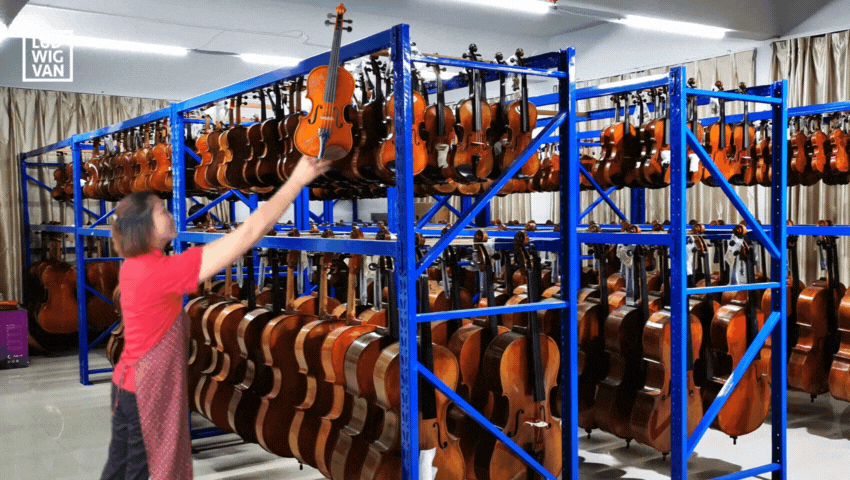
More than 950,000 violins are crafted each year in the small Chinese city of Huangqiao Town, earning it the nickname the “Cremona of the East”. That staggering number makes it the world’s largest violin-making centre, supplying about 70 percent of China’s market, and about 30 percent of the global supply, according to local officials.
Of that total, annual export sales have reached 720,000, accounting for 53 percent of China’s violin exports. The instruments are shipped to markets in Europe, North America, the Middle East, and South Africa, among other regions. Annual exports from the town are valued at about 1 billion yuan ($196,524,226.60 CAD).
In a city of about 200,000 residents, 30,000 work for violin companies, which number well over 230. Some companies also produce violas and cellos.
Why Huangqiao Town?
Huangqiao Town has a thousand-year-old history, with an old centre constructed during the rule of Emperor Shenzong of Northern Song Dynasty, between 1048 and 1085. It was once best known for its sesame cakes.
During the 1960s, there was a sudden spurt of violin-making in China, which led to the construction of factories in Beijing and Shanghai. The latter was once China’s violin-making capital, and drew workers in the industry from far and wide.
Some of them came from Huangqiao, such as Li Shu. Now in his 70s, he was an apprentice violin-maker in Shanghai. Along with another businessman from the area, he brought that violin-making experience home in 1962. In 1971, after establishing Huangqiao’s first factory, he crafted the very first violin in Huangqiao Town.
The Huangqiao factory went from making accessories for makers in Shanghai, as a branch of the Shanghai Violin Factory, to producing their own instruments. By 1995, Li’s company went independent, and produced 60,000 instruments in its first year. Today, he’s chairman of Fengling Musical Instruments Co., the Town’s largest violin maker.
The Chinese government’s policy of opening up business to the West benefited local manufacturers, and led to the quick development of the industry at the manufacturing level.
“The policy has opened the door to the world for Chinese companies, providing a platform to learn from overseas advanced technology as well as promoting cultural exchange,” Li told Global Times in February 2023.
But, first they had to convince outside markets of their product.
“It’s no easy thing to have Chinese-made “Western musical instruments” enter the overseas market,” Li remarked in a statement in 2018.
But, he and other local manufacturers gradually won over the American and European markets with reliable quality and delivery. In part, it’s accomplished by being able to supply whatever each market demands, from high-end instruments to affordable options. Fengling, for example, produces 120 different types of violins.
“We can produce large quantities of violins in a short period of time with a price lower than the international market,” Li says in an interview with Global Times.
In other respects, it’s advancing in technology is creating an advantage. Typically, a high-quality violin uses wood that has been aged and dried anywhere from a decade to 50 years. It reduces the volatile elements in the wood, such as water and sugars, making it more stable. Fengling invented a proprietary process that uses microbiological technology to remove those impurities, which speeds up the drying process considerably.
Over time, the focus on affordability has expanded to include the middle and high end of the violin market. Some makers, for example, only produce a dozen or so ultra-high-end instruments a year.
Becoming a music city
The violin industry has changed Huangqiao Town. Studying the violin is compulsory in grades one and two, after which students are free to choose whether to continue. Many of them do.
There is a culture and arts centre, and a local opera troupe. There are more than 6,000 trained musicians who live in the Town. There are plans for a massive musical theme park to attract tourists.
Huangqiao plays host to International Instruments Playing Day of China. In 2022, more than 50 bands and 4,000 musicians performed for 60,000 audience members.
It has held the title of the violin capital of China since 2009.
- Sustainability and the Music Industry - February 26, 2024
- Online Content Creators Continue Trend of Choosing Classical Music - December 18, 2023
- TikTok #Classicalmusic Challenge Returns For Round 2 - July 31, 2023


